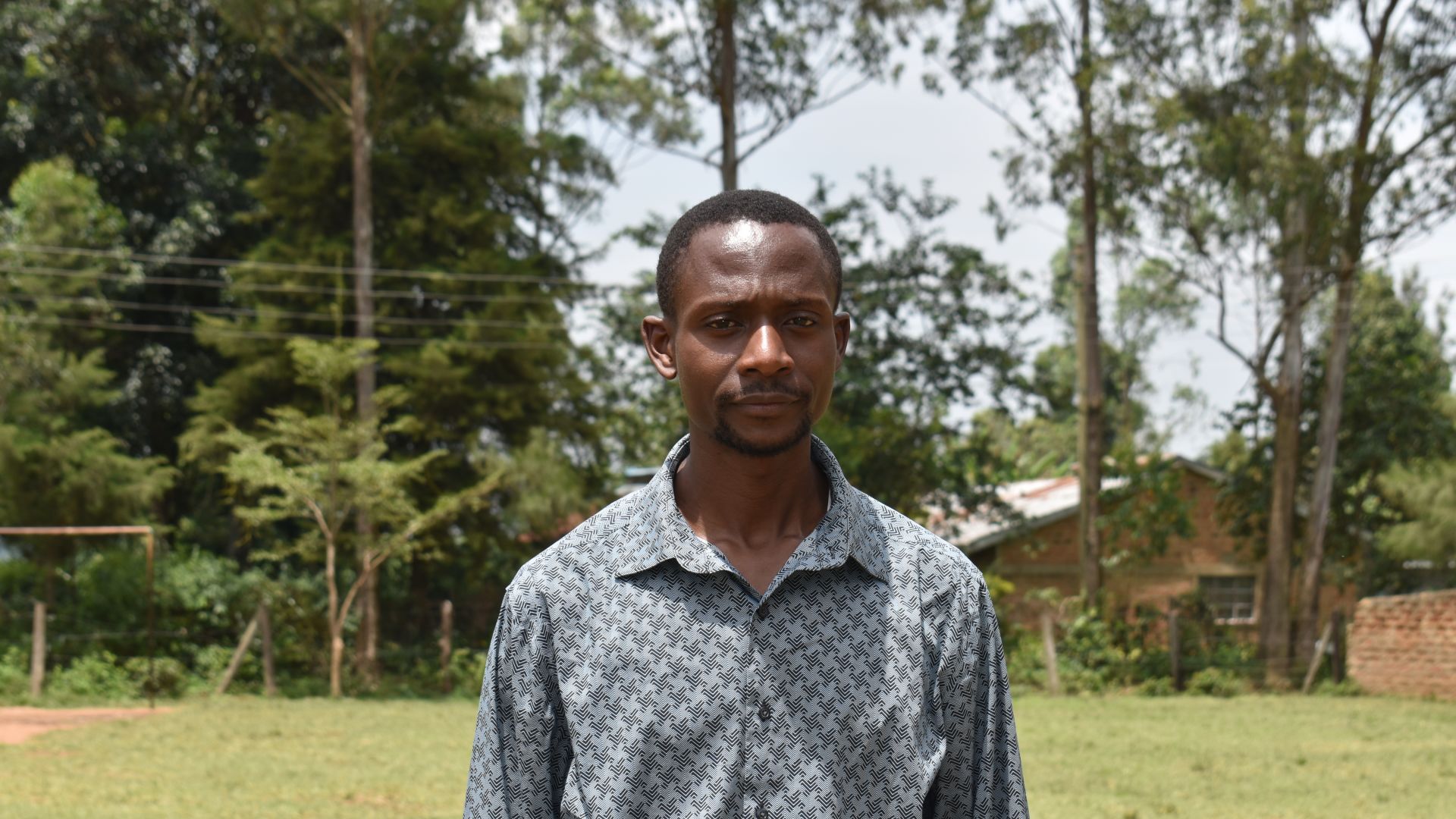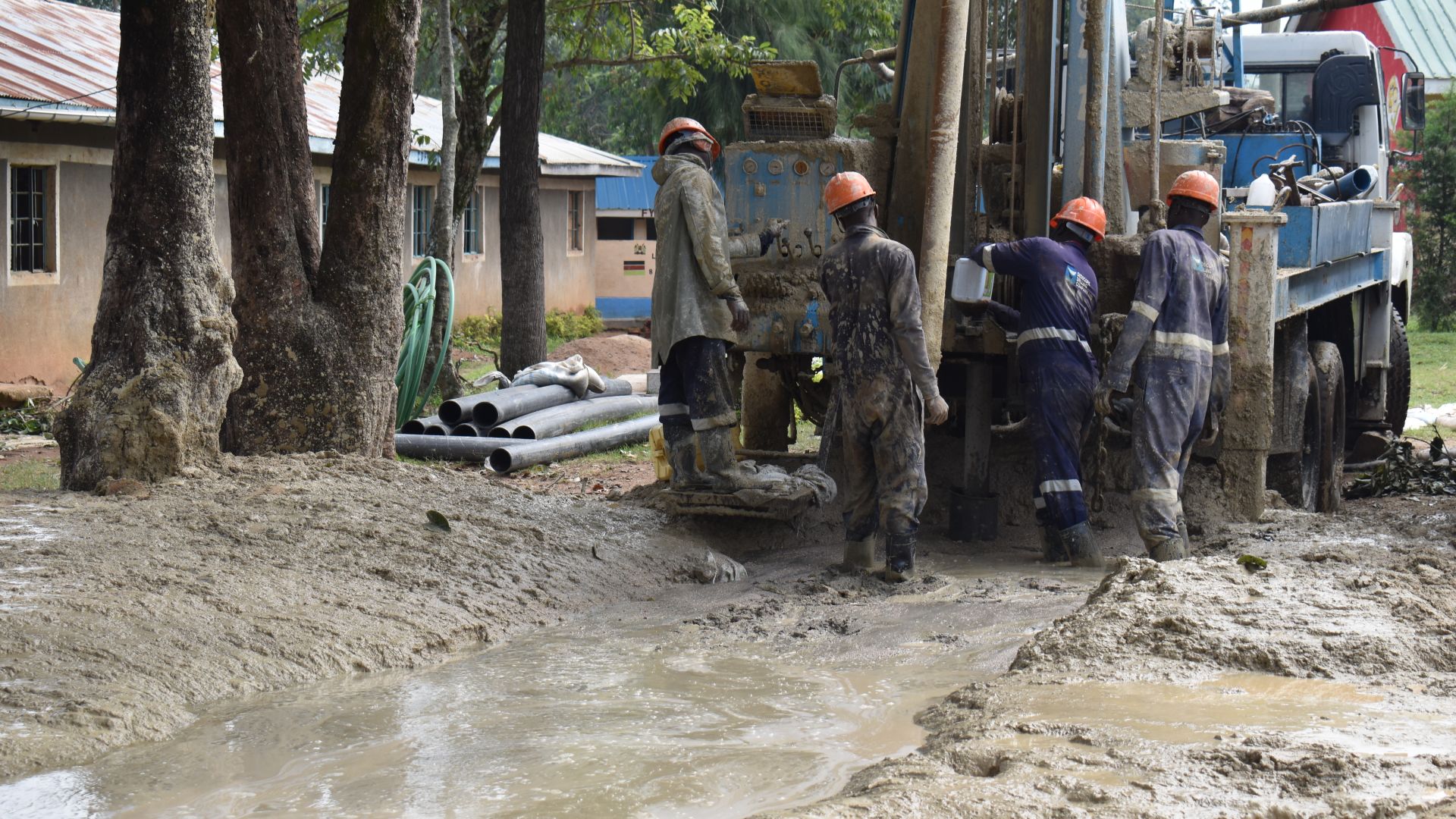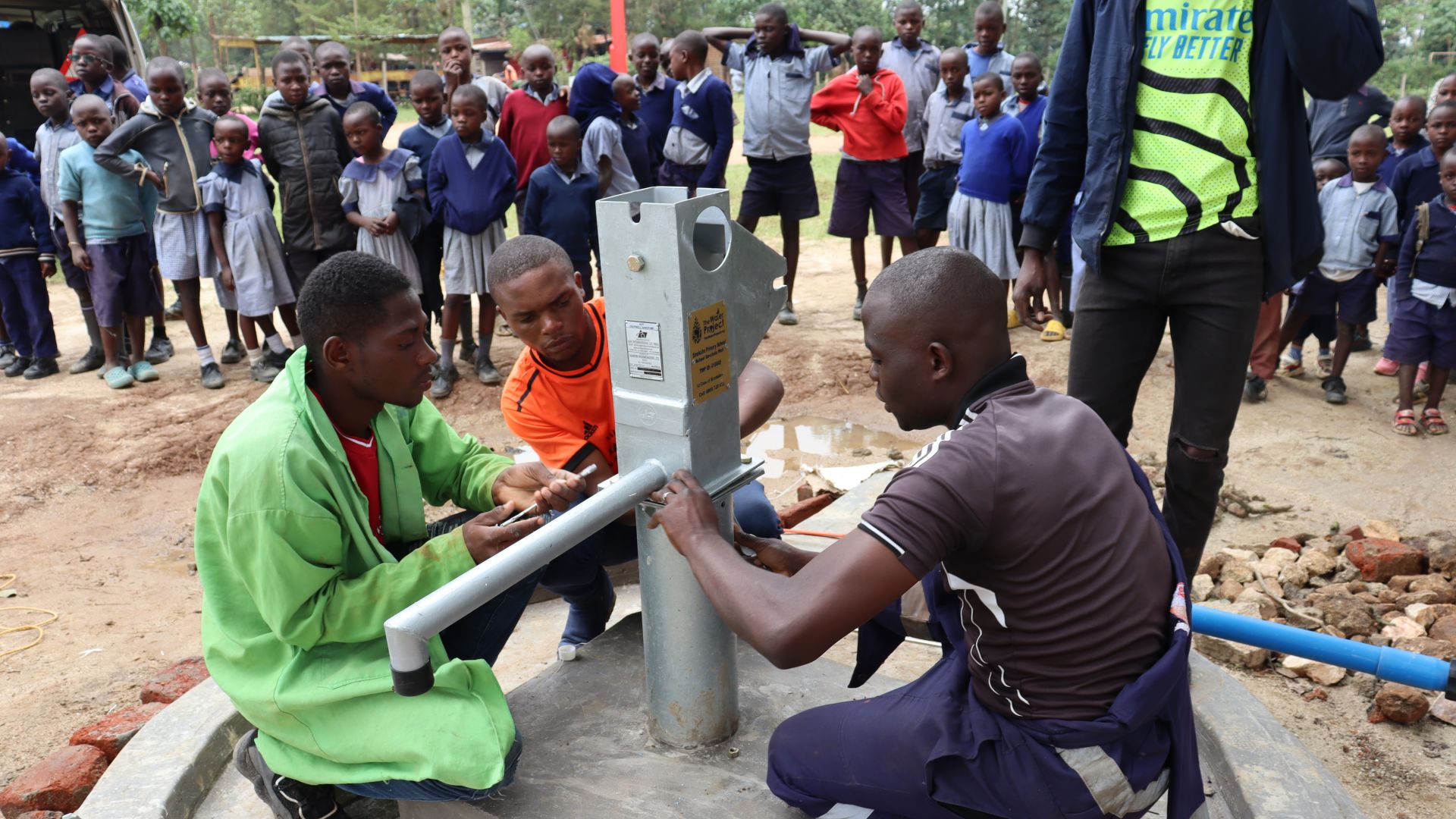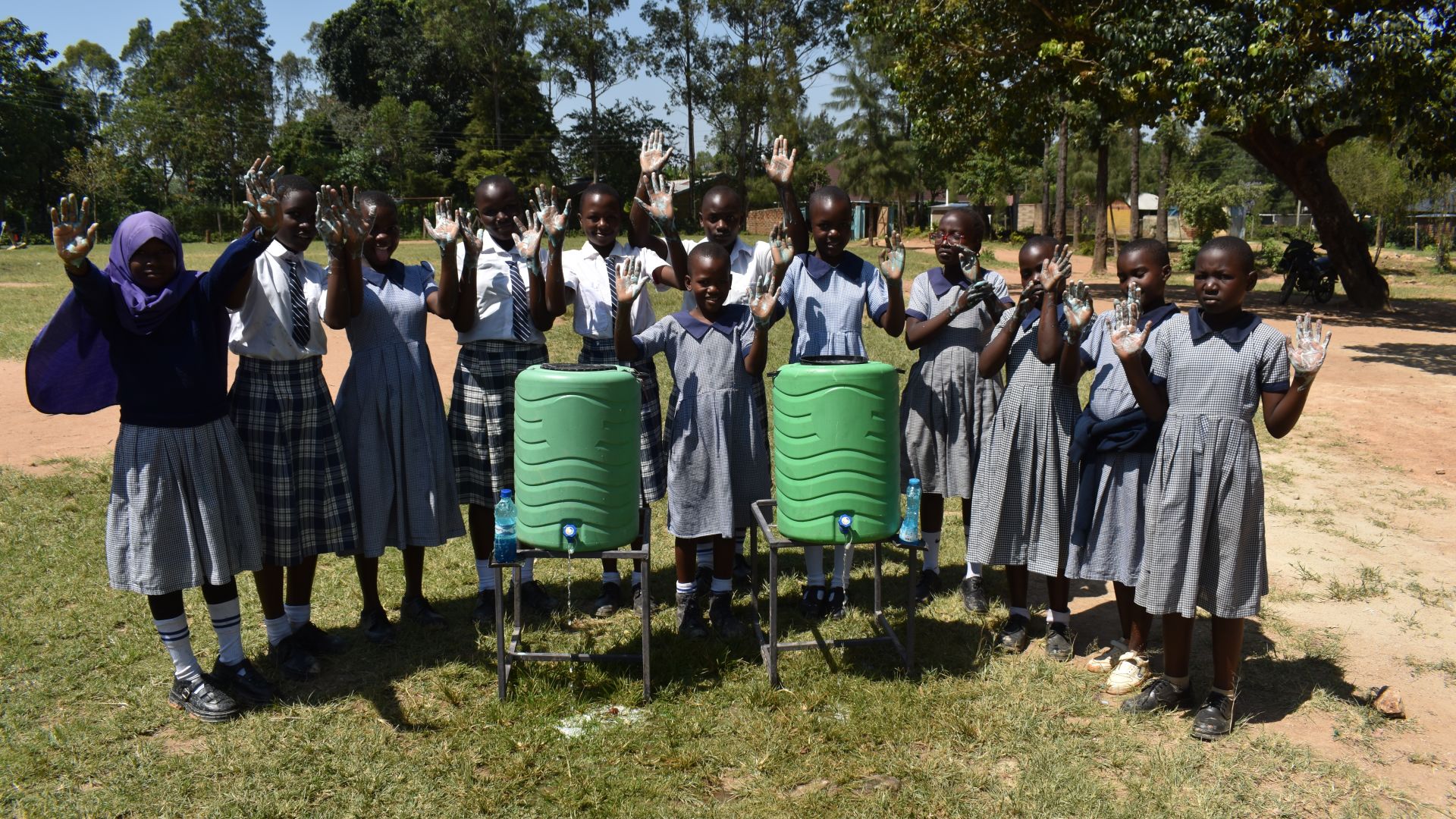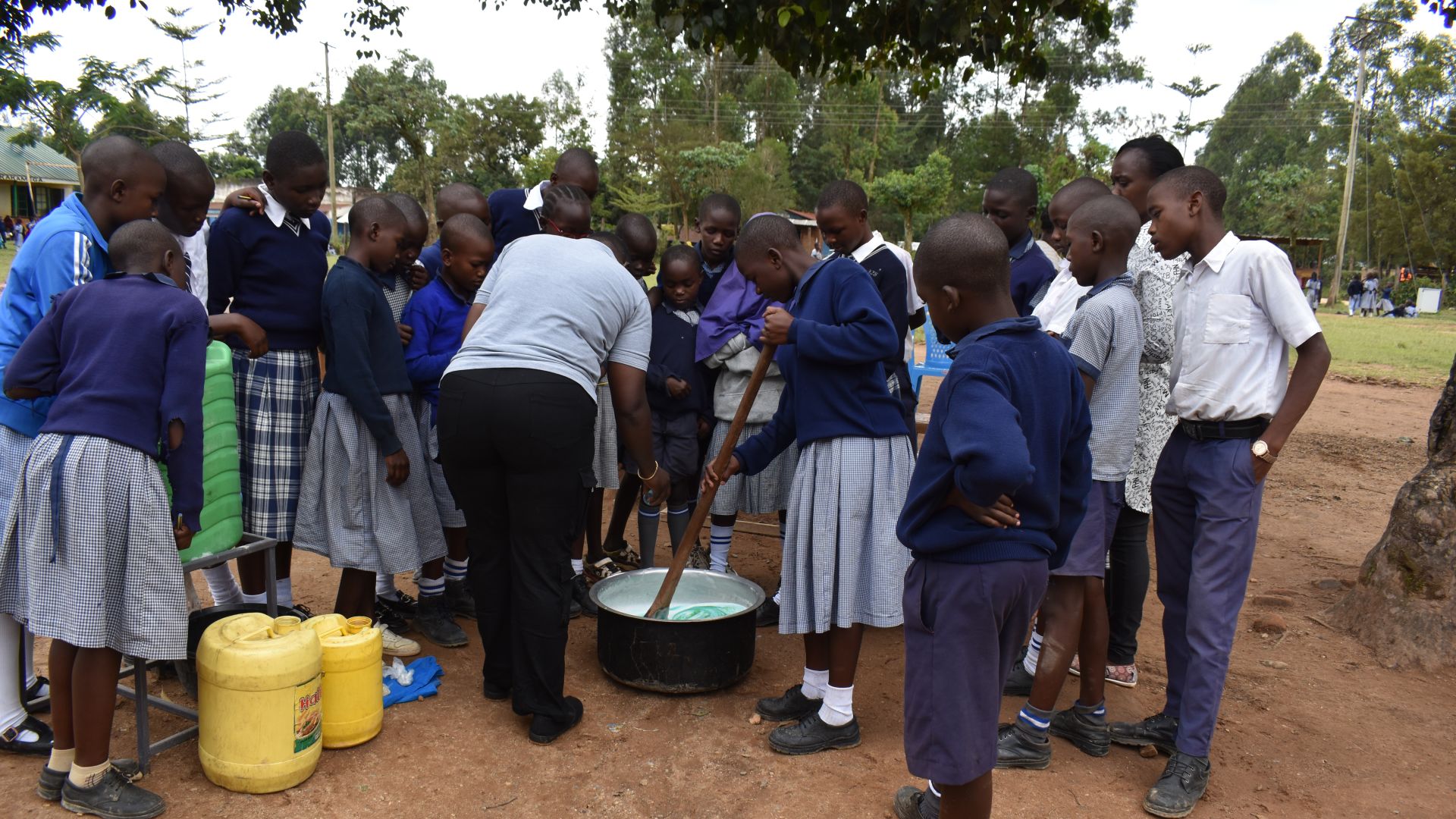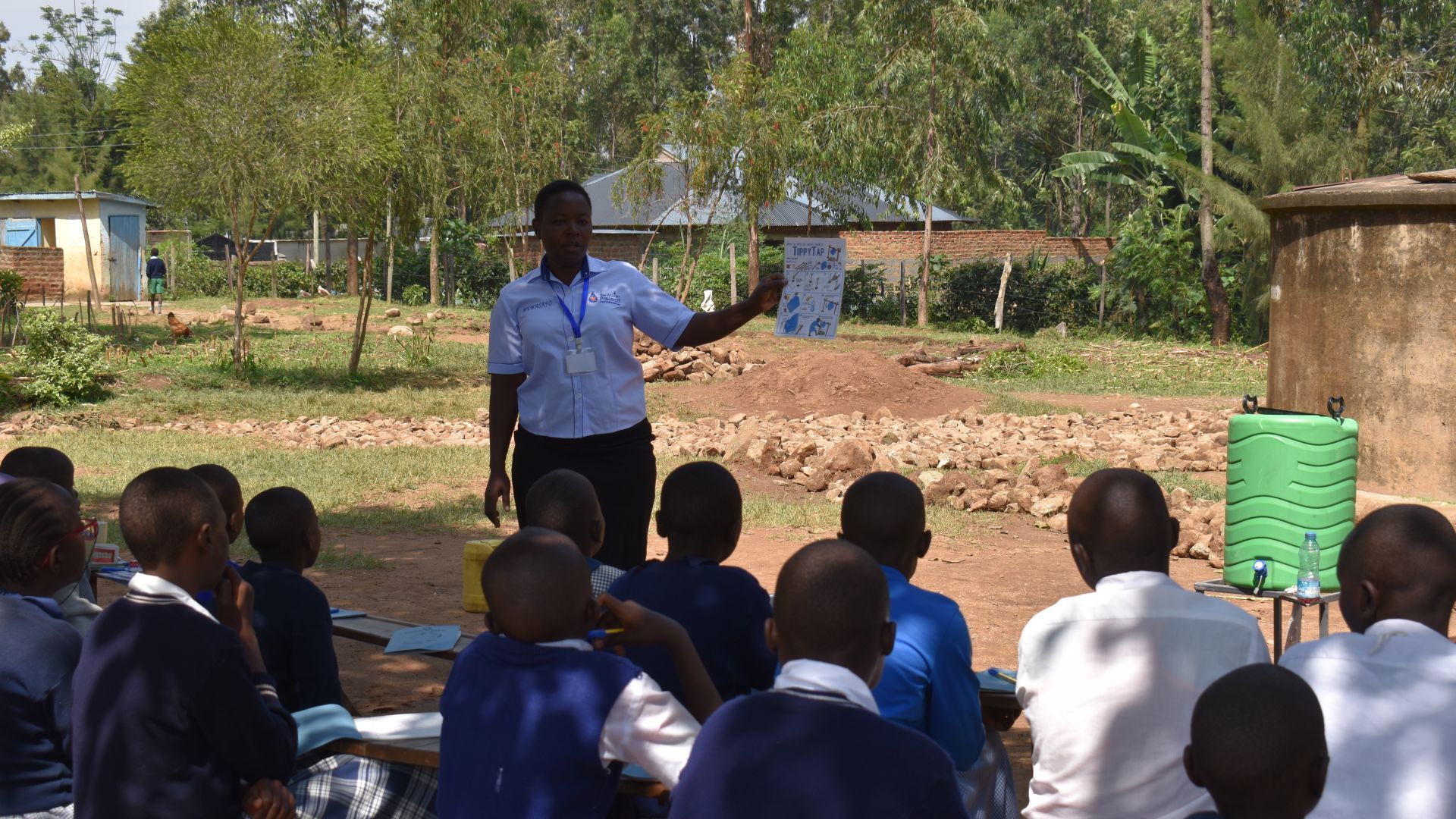The 705 students and 25 teachers of Emukaba Primary School struggle to access sufficient water. Students carry water from home each morning to be used at the school. It is an exhausting task that leaves them weary before the day has even begun. And since students spend so much time finding and collecting water, they miss out on important learning opportunities.

"The school depends on seasonal water sources, including rainwater harvesting in the rain tanks and springs. During [the] drought season, the spring where pupils get water goes dry, and pupils are always forced to depend on [a] passing stream," said field officer Amos Emisiko.
When the rainwater tanks dry, usually after a week with so many people relying on them, students collect water from the local spring. However, the spring has issues. It has structural damage causing low water yield, and the water it provides is often contaminated, leaving those who consume it suffering from water-related illnesses.

"We find the spring already overcrowded with community members. We waste a lot of time and end up missing some lessons. During cleaning days, we are forced to spend all our game time trying to find water," said 13-year-old Faith S.

"During the drought season, the spring goes dry, and we are forced to find [an] alternative source, which is a passing stream," continued Faith.
Amidst the prevailing water crisis, teachers have also been struggling with a multitude of challenges. Teachers have been working tirelessly to ensure that their school environment remains safe and hygienic. However, the lack of adequate water supply has made it exceedingly difficult to carry out their duties effectively. As a result, teachers have been facing various issues, including health problems and increased workload, affecting their overall performance.
"Teachers are forced to buy or carry drinking water from home. In other cases, they are forced to borrow from neighbors," said teacher Joseph Mudaki (seen below).

Installing a well on the school campus would provide the students and teachers of Emukaba with easy access to water, enabling them to meet their needs without wasting energy on finding and collecting water. This would allow them to focus on building a stronger future for themselves instead of spending valuable time on water collection.
"The proposed borehole will save the pupils from long walks to find water. The proposed water point will address the issue of safe water in the school since the source will be safe, unlike when pupils bring water from different sources where some are not safe," concluded Amos.
Water at schools is unique, which is why we need unique solutions.
The Proposed Solution, Determined Together...
At The Water Project, everyone has a part in conversations and solutions. We operate in transparency, believing it benefits everyone. We expect reliability from one another as well as our water solutions. Everyone involved makes this possible through hard work and dedication.
In a joint discovery process, community members determine their most advantageous water solution alongside our technical experts. Read more specifics about this solution on the What We're Building tab of this project page. Then, community members lend their support by collecting needed construction materials (sometimes for months ahead of time!), providing labor alongside our artisans, sheltering and feeding the builders, and supplying additional resources.
Water Access for Everyone
This water project is one piece in a large puzzle. In Kenya, Sierra Leone, and Uganda, we're working toward complete coverage of reliable, maintained water sources that guarantee public access now and in the future within a 30-minute round trip for each community, household, school, and health center. One day, we hope to report that this has been achieved!
Training on Health, Hygiene & More
With the community's input, we've identified topics where training will increase positive health outcomes at personal, household, and community levels. We'll coordinate with them to find the best training date. Some examples of what we train communities on are:
- Improved hygiene, health, and sanitation habits
- Safe water handling, storage & treatment
- Disease prevention and proper handwashing
- Income-generation
- Community leadership, governance, & election of a water committee
- Operation and maintenance of the water point
Handwashing Stations
Alongside each water source, we also provide two new gravity-fed handwashing stations that will allow everyone at the school to wash their hands without running water. Handwashing is so important to help prevent future water-related illnesses in the school community.
The student health club will maintain the stations, fill them with water, and supply them with soap (which we will teach the school community how to make during the training!).
VIP Latrines
In addition, we will construct two triple-door Ventilated Improved Pit (VIP) latrine blocks designed to prevent fecal disease transmission. Each latrine will have a cement floor, which is easy to use and clean regularly. Three doors will serve the girls, and three doors will serve the boys.

 Borehole Well and Hand Pump
Borehole Well and Hand Pump
 Rehabilitation Project
Rehabilitation Project














